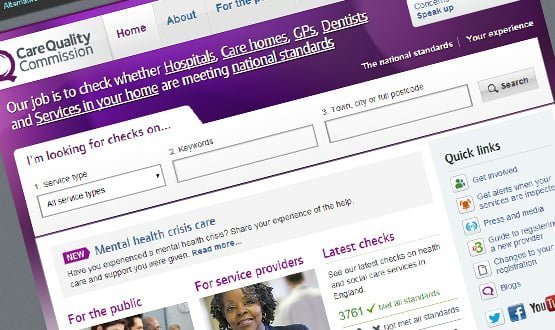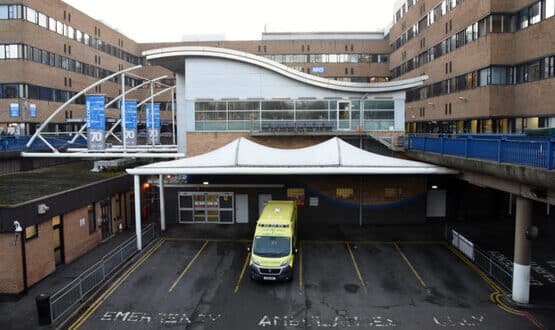EHI Interview: Emma Rourke
- 13 March 2014

Emma Rourke started her career as a nurse, which sounds like a job far removed from her current post as director of intelligence for the Care Quality Commission.
However, she doesn’t really see it that way. “We are all a product of our past experience, but I like to think that starting there, and putting people using services first, stays with you,” she says. “There is a real risk of talking about information and intelligence at one remove; so it is very good to be able to remember why it all matters.”
The only constant is change
Rourke tried several specialist roles within nursing, working with people with learning disabilities, but found herself increasingly interested in using clinical audit “as a lever to improve quality.”
This took her into information roles at both trusts and primary care trusts, before moving to the Healthcare Commission as a team leader on the ‘annual health check.’
This was the system that was supposed to provide a ‘fuller picture’ of trust performance than the ‘star ratings’ introduced by Labour following the Bristol Royal Infirmary scandal, but which was abolished by the coalition in the days when it used to talk about ‘ending target culture’.
Since then, Rourke has worked in policy, on the registration system that became the commission’s focus when it took on social care, on its specialist reviews and studies, and as its head of analytics on her way to her current job.
As this very potted career history suggests, she has seen a great deal of change, even during the time that she has worked for the HC and CQC, which is now undergoing another round of upheaval.
The organisation is introducing a new management structure, based around ‘chief inspectors’ for hospitals, adult social care and primary care.
It is creating a new inspection regime, based on the ‘Keogh review’ of 14 trusts with apparently high death rates that followed the publication of Robert Francis QC’s second report into the Mid Staffs scandal. So far, this has inspected 18 hospitals, with all due to be visited by the end of the year.
And it is piloting ‘Ofsted-style ratings’ for the public, to fulfil another aspect of the government’s response to the Francis Inquiry. So far, this has rated three volunteer trusts, with another 20 due by the autumn.
Reflecting on these changes, Rourke says the CQC is now “a much more transparent organisation. We want to be much more open about how we use information and how we make decisions.”
New data models, data packs, and outcomes
She goes on to outline three key strands of work that underpin this ‘new approach’. The first is a new data model – or rather models, for its different sectors – to try and “spot organisations that are looking riskier than others.”
A week or so after EHI’s interview, the CQC issued a new ‘Intelligent Monitoring’ report based on 150 indicators, that put acute trusts into one of six ‘priority band[s] for inspection’ – with trusts in the highest risk band slated for more immediate attention.
Commenting on the report, the chief inspector of hospitals, Professor Sir Mike Richards, argued the CQC had early evidence that intelligent monitoring was working, since the first 18 inspections had shown that “hospitals in band one tended to deliver poorer care for patients.”
However, he also stressed that the indicators are not, in themselves, “judgements of quality”, and the inspections by large teams of professional and clinical staff and members of the public are also essential.
In support of this, the second area of work is to develop the data packs that are put together ahead of the inspection visits, and which will be published on the CQC’s website in future.
And the third strand of work is the new ratings, about which Rourke says: “What we are keen to do is to show how our inspection findings and the other things that we know about a trust inform our judgement. Everybody should be clear about how that judgement is formed.”
A difficult environment
The CQC is going to have its work cut to achieve this, as trusts come under increasing pressure to maintain their reputation with commissioners and patients as financial pressures bite.
Shortly after EHI interviewed Rourke, the CQC issued a report on the first 18 inspections that attempted to highlight the “unacceptably wide range of quality” it had found, and some serious short-comings in the use of escalation wards and ‘do not resuscitate’ forms.
But Sir Mike found himself drawn into a row with University College London Hospitals NHS Foundation Trust, which successfully had a warning notice turned into a compliance action by arguing that the CQC had not demonstrated consistent judgement.
He was also pushed to explain exactly how the CQC would convert its data and inspection reports into an Ofsted-style judgement.
He told the Health Service Journal that every service at a trust would be given a rating ranging from ‘inadequate’ to ‘outstanding’ on five key questions – whether it is safe, effective, caring, responsive and well-led. The ratings would then be aggregated for each service, for each hospital, and for a trust as a whole.
Trusts that were rated poorly on two or more of the questions would usually be rated as ‘requiring improvement’ overall, he added. But the CQC would “not be driven exactly by the numbers and an algorithm” but would “use judgement” in coming to its decision.
In the event, the three trusts that volunteered to be rated – Heart of England, Dartford and Gravesham and Royal Surrey – were rated as ‘requires improvement’, ‘requires improvement’ and ‘good’ respectively.
Taking the bird’s eye view
To add to the pressures on it, the CQC is now operating in a crowded field, both when it comes to undertaking its regulatory activities, and when it comes to putting out information about them for the public and patients.
Rourke says that “when it comes to publishing information, we want to be clear what our ‘authoritative voice’ means” and acknowledges that “anything we put out there has to have credibility.”
She adds: “One of our unique offerings is that we not only have objectivity but a bird’s eye view. We do not just look at hospitals, but at other parts of how the system is operating.
“I am very interested in looking at other providers, for example at care homes. We started to say something in our ‘State of Care’ report [the annual report that the CQC is legally required to publish] about the impact of care homes on length of stay [in hospital] and we should be able to do more of that.”
Reducing the burden of data collection
Well before its latest shake-up, the CQC started working with QinetiQ on an ‘intelligent data mining’ tool to collate and sift a wide range of data sources to support its problem spotting role.
Rourke says it is “very pleased” with parts of this work; although it now faces a challenge in moving away from the taxonomies into which it was organising data and getting its new data models in place.
At the same time, she says the CQC takes very seriously the wider NHS commitment to improve the oversight of NHS performance without imposing new data collection burdens on providers. “Ideally, we do want more information and more bespoke information, but we cannot impose new burdens,” she says.
The CQC is leading on the creation of a new data roadmap for the National Information Board – the body formerly known as the Information Services Commission Group.
This was created to co-ordinate the work of Department of Health, NHS England and the Health and Social Care Information Centre in the IT space, but it has steadily expanded to include other organisations interested in data, and started to take on its own identity.
“That is an important focus for us,” Rourke says.“We have also signed the concordat on reducing the burden of national requests for information, particularly on frontline staff.
“There is a lot we are doing – for example with online services – to reduce the burden as much as possible; we do recognise that asking people to fill in forms and email them back to us is not ideal.
“We also want to make more effective use of electronic resources, such as the electronic staff record. Staffing has emerged as a very important issue, and we want to make use of the systems that are already in place when looking at that.”
An information-led future
Overall, Rourke says that information underpins the CQC’s work as never before. “Our three inspectors are very supportive of our information strategy and what it can produce,” she says.
“It is the lens that our inspectors will use [when they visit hospitals], so our data packs will continue to evolve, in discussion with our inspectors and providers, but I think that ‘being information led’ and being client focused are both very achievable aims.
“We also want a new relationship with the public. We want to make sure that what we publish in our national reports is relevant to them.”
Rourke also reiterates that openness is the key to the regulator’s future. “In everything we do, we want to be open with people. The downside of that is that it will sometimes make our mistakes very visible. So we need to act with a very high degree of integrity.”
It sounds like walking a tight-rope. But Rourke clearly thinks it’s worth walking, if the result is better outcomes for patients. “I could never have imagined doing this when I graduated,” she concludes. “But in some ways, it’s not that different from where I started.”




